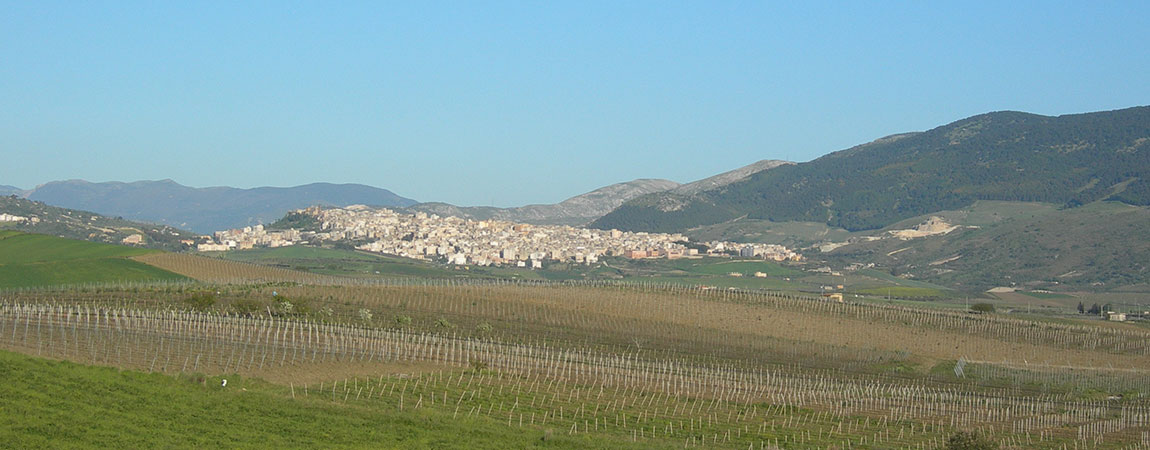
When organizing a tour to discover the beauties of Sicily, famous stops and places are inevitably included such as Syracuse, Taormina, the salt pans of Trapani, Palermo and the splendid Valley of the Temples in the Agrigento area.
Right in the province of Agrigento hides one of the most beautiful towns not only in Sicily but also in all of Italy: it is Sambuca di Sicilia, declared in 2016 Village of villages and located in the heart of Belice Valley. The beauty of Sambuca di Sicilia is linked to its ancient history, the memories of which are still well imprinted in the village, among historic neighborhoods and archaeological areas worth visiting.
Discovering Sambuca di Sicilia, the most beautiful village in Italy
Sambuca di Sicilia is located about 89 km from Agrigento, on a hill at 350 m. high, surrounded by thick bush and reliefs such as Montagna Grande, Pizzo del Corvo and Monte Adranone. At the top of the latter there is an important archaeological site with vestiges dating back to at least the XNUMXth BC: the territory, in the past called Adranon, was inhabited by Greeks, Sicans, Carthaginians and Romans, with traces of each of these ancient civilizations. The finds found here, including XNUMXth century vases and an enchanting statue depicting Demeter with beautiful hair, are today preserved in Sambuca di Sicilia, in the patrician Panitteri Palace seat of the archaeological Museum of the village.
Not far from Sambuca di Sicilia there are also the Monte Genuardo Nature Reserve, which can be visited on foot or by mountain bike and the Orange Lake. The latter is an artificial lake basin located in the Valle dei Mulini, a destination for migratory birds and an unmissable stop to admire the remains of Mazzalakar Fortress, which emerge when the water level drops. Those who visit Orange Lake can also organize excursions to the beautiful ones Tardara Gorges, dug over the centuries by the Carboj river.
The origins of the name Sambuca di Sicilia are dubious: there are those who think it is linked to the shape of the urban layout which recalls the ancient musical instrument of the sambuca. Others, however, think it is simply linked to the presence of elderberry plants in the surrounding area. The theory of origin from Arabic is also very popular Zabut, name of the castle founded by Al-Zabut, during the Arab domination throughout Sicily.
Wandering the streets of Sambuca di Sicilia means taking a step back in time, among buildings in clear baroque style, ancient churches and neighborhoods that recall the presence of the Arabs.
Sambuca di Sicilia: what to see
The most characteristic area of Sambuca di Sicilia is the Saraceno Quarter, a small kasbah where small squares, arches, courtyards follow one another Seven Fridays, ancient alleys from the Saracen era. In the neighbourhood, during the reconstruction started after the 1968 earthquake, many human remains were found in the basement of the village: perhaps this is why it is said that the Ghost Street is haunted by the specter of an Arab warrior who cannot find peace.
In the Saraceno Quarter they are worth a visit Church of the Rosary rich in eighteenth-century paintings and the beautiful Mother Church dating back to the XNUMXth century, located in Piazza Baldi Centellis: its tufaceous stone façade and the beautiful bell tower with the spire covered in colored majolica stand out. The Mother Church stands where the Zabut Castle once stood and is flanked by the Belvedere Terrace, from which the view extends over the underlying vineyards from which the wine is produced Sambuca di Sicilia DOC, on the Belice Valley and, on the clearest days, also on the Sicani Mountains. Near the Belvedere there are columns, in memory of the Holy Week rites which took place with the intense participation of the entire population.
Leaving the Saraceno Quarter and heading towards Corso Umberto I, you can visit the sixteenth century Church of Carmine, inside which there is a valuable statue depicting the Madonna dell'Udienza, most probably attributed to Gangini.
In Corso Umberto I there is also the Municipal Theatre built in the XNUMXth century: it is a small jewel complete with a flattened dome, a vast stage and three tiers of boxes.
Before leaving Sambuca di Sicilia you cannot help but taste the typical sweets, namely the Minnie Mouse by Virgini, created by Sister Virginia in 1725 at the behest of the Marchioness of Sambuca: they are pastries filled with chocolate, milk cream and pumpkin, then covered with a very sweet icing. Tomasi di Lampedusa also praised them in “Il Gattopardo”, defining them as “unchaste Paste delle Vergini”.
© Image by Leop81 at it.wikipedia, Public domain, via Wikimedia Commons









